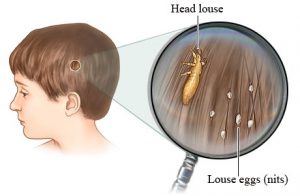
07 Dec Head Lice Blitz
As we near the end of this term, it would be wonderful to end the year as a head lice free school community and start 2018 without itchy scalps…it’s time for another head lice blitz!
To break the cycle we need everyone to check their child’s hair and check all family members, as the lice may have crawled from person to person. Please regularly check for any eggs or lice.
Please note head lice:
- can’t fly, jump or swim
- are very unlikely to be spread by objects such as hats, combs and pillows
- don’t have a preference for dirty, clean, short or long hair
- only affect people and can’t be caught from animals
Please check your child’s hair this week and then repeat regularly over the following three weeks. If everyone commits to doing this we will be able to break the cycle and children will be free from head lice.
A reliable and chemical-free method for detection and treatment, the wet-combing method is described below.
- Wash the hair using ordinary shampoo and apply ample conditioner, before using a wide-toothed comb to straighten and untangle the hair.
- Once the comb moves freely through the hair without dragging, switch to the louse detection comb. Make sure that the teeth of the comb slot into the hair at the roots with the bevel-edge of the teeth lightly touching the scalp.
- Draw the comb down to the ends of the hair with every stroke and check the comb for lice.
- Remove lice by wiping or rinsing the comb.
- Work methodically through the hair section by section so that the whole head of hair is combed through.
- Rinse out the conditioner and repeat the combing procedure in the wet hair.
- Repeat the procedure on day five, nine and 13 in order to clear the young lice as they hatch, before they have time to reach maturity.
For more information see:
https://www.nhs.uk/conditions/head-lice-and-nits/
Thank you for your cooperation.



